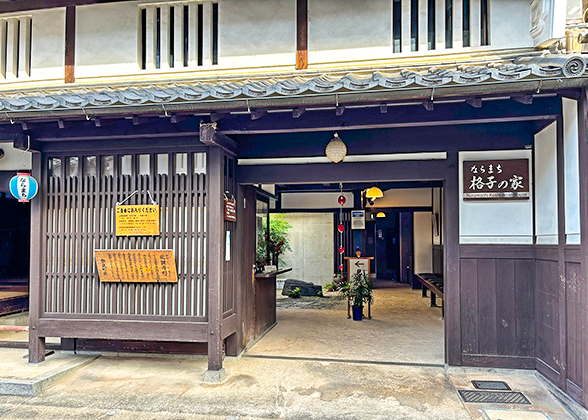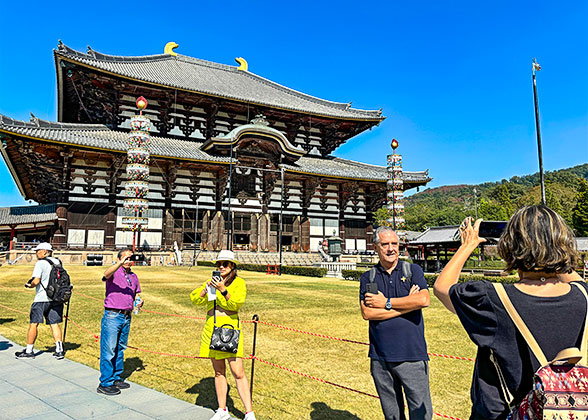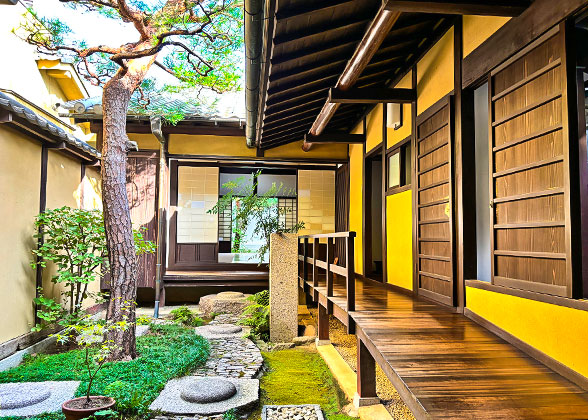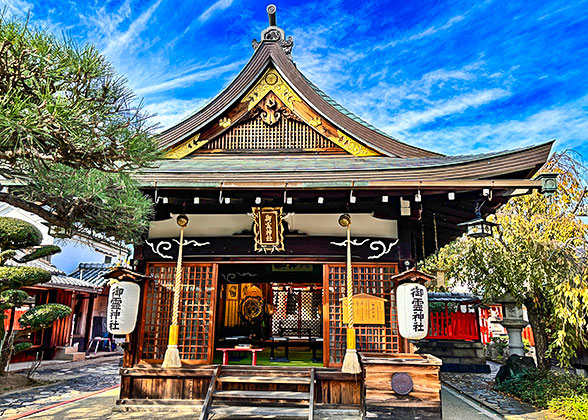Naramachi Koshinoie
Naramachi Koshinoie is a typical Machiya that combines private housing with commercial stores, reflecting the traditional house features a few hundred years ago in Japan. Here, you can learn about the living style of ancient Japanese and appreciate the traditional architectural style of Japan.What is Machiya?
Machiya is a traditional Japanese one-piece house that started to be popular in 1600s among Japanese merchants and artisans. In accordance with the law at the time, merchants needed to pay tax according to the width of the house. The wider the house, the more the tax. To save money, Machiya, narrow in width but deep in length came into being. Machiya was generally built of wood and earthen bricks, which is difficult to maintain and repair. Many of them have collapsed or been tore down. The current Naramachi Koshinoie was built by the Japanese government as a replica of the previous house.
|
|
|
Know the Internal Structure of Naramachi Koshinoie
Like other Machiyas, Naramachi Koshinoie is basically made of wood and clay bricks and the rooms in the front were used as shops while those in the back as living areas of the shop owner and his families, including a living room, a tea room, a kitchen, and a storage room on the lower floor and bedrooms on the upper floor. The front area and back area are connected by a long corridor. You can find that every inch of the house is well utilized. For instance, the stairs were made into drawers to store goods. If you knock the plank under the stairs, you can know it’s empty.In addition, you even can find a mini garden inside the house and there is a tree higher than the house in the center of the garden. The garden can ensure the ventilation and light transmission of the house to a certain extent. Besides, on a rainy day, the owner of the house can stand in front of the railing to enjoy the rainy view of the garden.
|
|
|
Visit Tips:
1. Taking a pair of socks is essential since you are not allowed to enter the Naramachi Koshinoie with shoes.2. Explanatory books in English are provided; you can ask the staff for one.
3. Please watch your head and your feet when you go up the stairs since the space is narrow.

Deer near the Naramachi Koshinoie
|
Opening Time and Ticket
It generally is open from 9:00 to 17:00 and closed on Mondays and the day after a holiday. You can visit it for free.How to Get to Naramachi Koshinoie
1. You can take JR Sakurai Line, then get off at Kyobate Station, and walk for about 8 minutes.2. You can take the Kintetsu Nara Line, then get off at Kintetsu Nara Station. Next, take the Nara bus at Kintetsunaraeki Bus Stop, and get off at Kideracho Bus Stop, which totally takes about 13 minutes for a single bus ride.
3. You can take the JR Nara Line, and get off at JR Nara Station. Next, take the Nara bus at the JR Naraeki Bus Stop, get off at Tanakamachi Bus Stop and walk to Naramachi Koshinoie. It takes about 10 minutes from JR Naraeki Bus Stop to Naramachi Koshinoie.
Recommended Visit Time
About 0.5 hour.Travel Advice
1. The Naramachi Koshinoie is located on an ancient commercial street, where you can see many stores that sell porcelains, handicrafts, and desserts. After visiting Naramachi Koshinoie, you can take a stroll there. The houses there are basically all ancient Machiyas, which make tourists feel like traveling to the ancient times. Besides, you can find some houses with the circular decorations made of red cloth, called “substitute monkeys”. It is said that it is a kind of amulet that can protect people from suffering disasters.2. After visiting this ancient architecture, you can walk to the nearby Goryo Shrine and Gangoji Temple to experience Japanese Taoist and Buddhist culture. Also, you can walk to the Higashimuki Shopping Street in 15 minutes to buy some local handicrafts and souvenirs.
See More:





